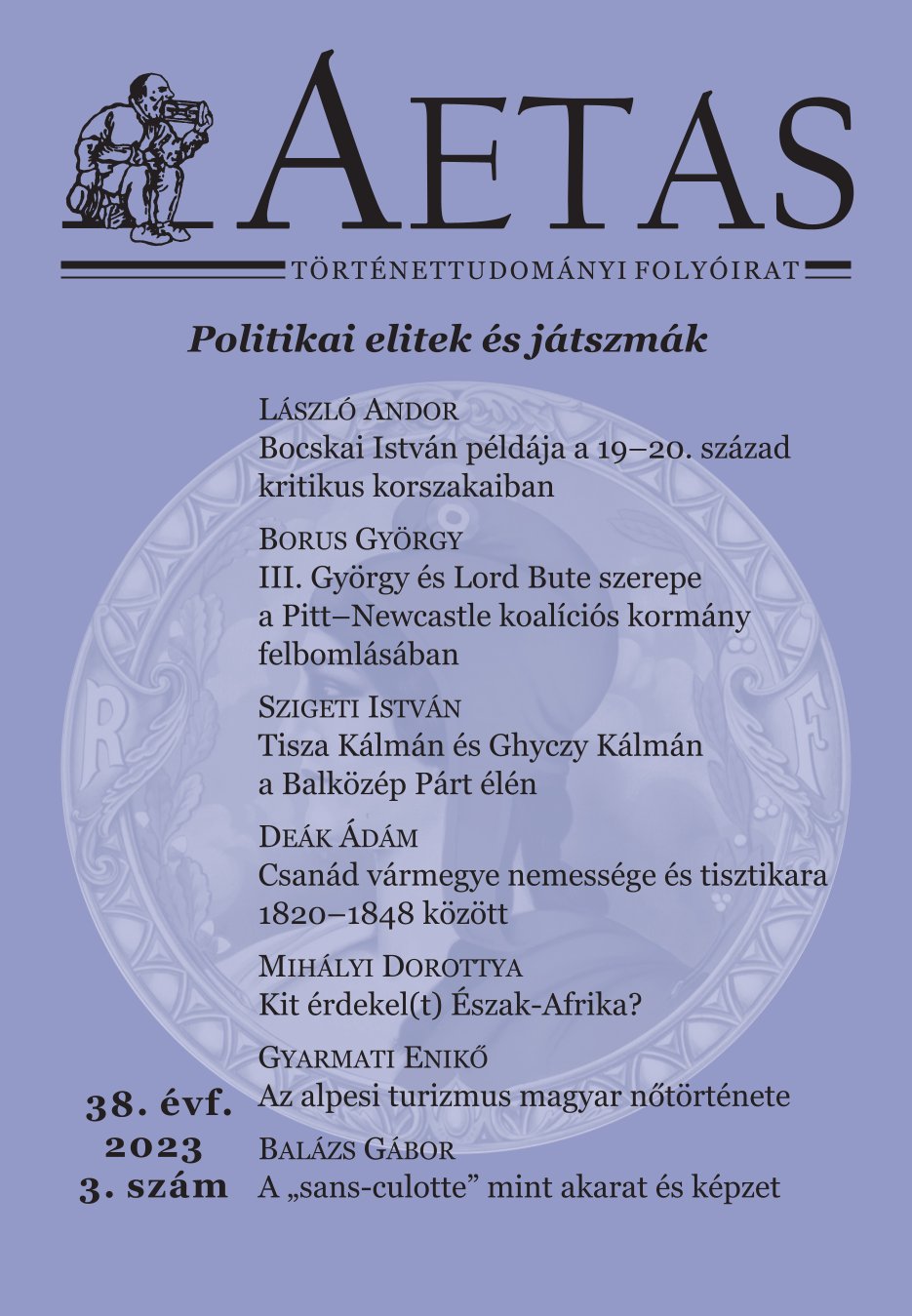Bocskai István példája a 19–20. század kritikus korszakaiban
The Example of István Bocskai in the Critical Periods of the 19th and 20th Centuries
Author(s): Andor LászlóSubject(s): 19th Century, Pre-WW I & WW I (1900 -1919), Interwar Period (1920 - 1939)
Published by: AETAS Könyv- és Lapkiadó Egyesület
Summary/Abstract: The goal of this study is to give an overview of the figure of István Bocskai, the prince of Transylvania in the public eye in three critical periods of the 19th and 20th centuries, particularly in political thought. He is mentioned often during difficult times, while before and after these periods he is referenced much less frequently. The experience of the Revolution of 1848–1849 constituted an emotional basis for the formation of the Hungarian national identity, and the previous struggles of the Hungarian Estates were seen as parallels. The contemporaries saw a connection between the glorious period of the 17th century and their own times. This connection elevated Bocskai’s revolution to being seen as one of the great chapters of Hungarian history, and the prince became a member of the national pantheon. During the crisis following World War I, and later around World War II, different considerations gained importance, and the prince’s image became much more multifaceted. However, Bocskai still wasn’t a divisive personality, he was seen as a great politician and freedom fighter. Every political faction and ideology considered him an example to be followed, and found something among his values, achievements or deeds that fit their current message. It can be seen that the meaning of the past changes constantly, and different sources of remembrance paint a confusingly varied picture of Bocskai, who is constantly “repositioned” in public memory, but the role of history in politics doesn’t change: it underlines and authenticates contemporary messages.
Journal: AETAS - Történettudományi folyóirat
- Issue Year: 2023
- Issue No: 3
- Page Range: 5-38
- Page Count: 34
- Language: Hungarian

